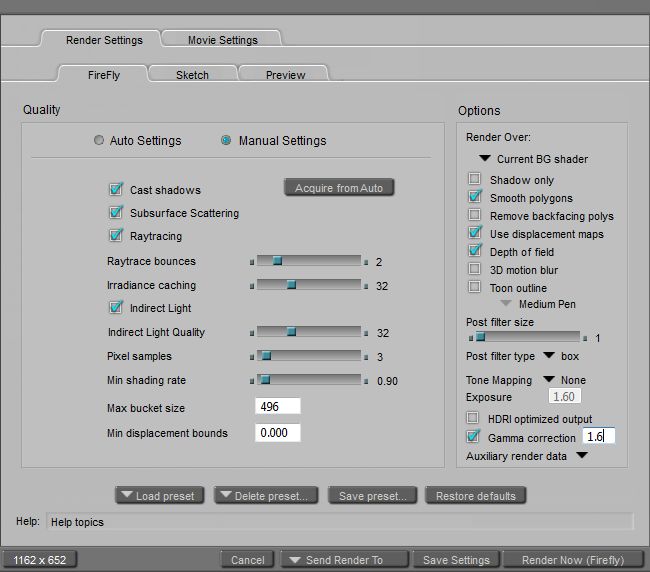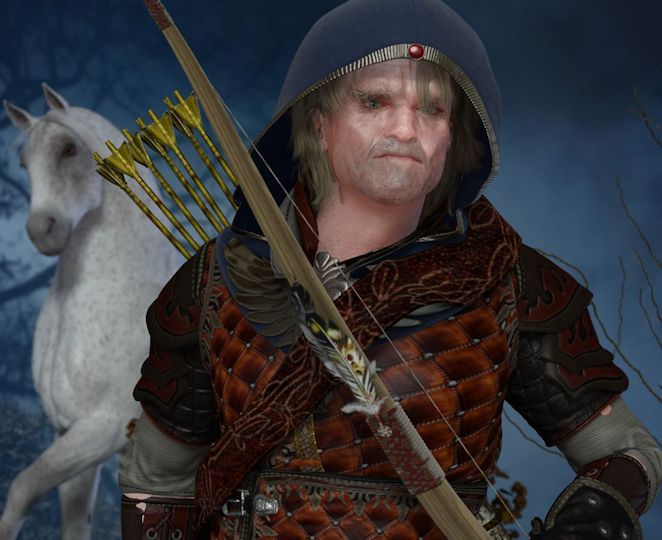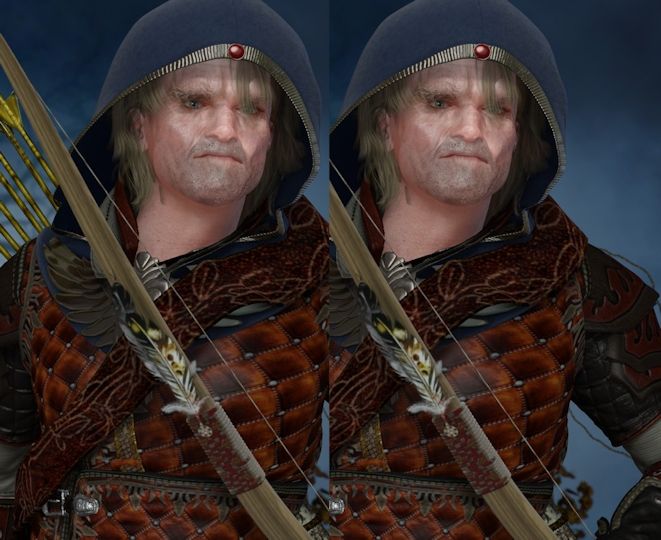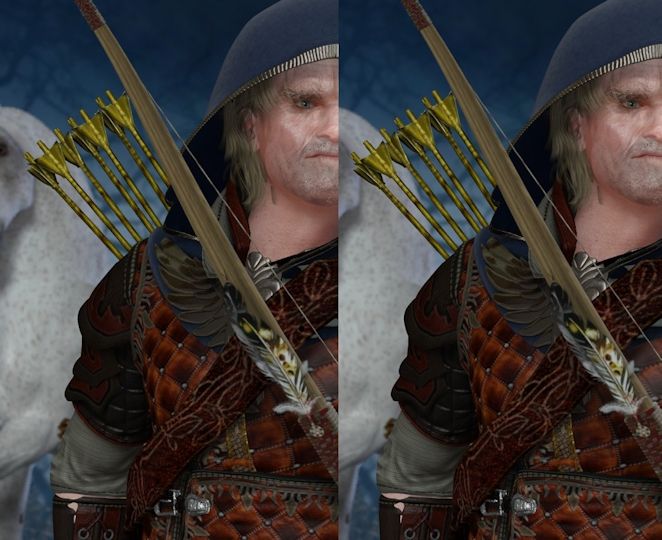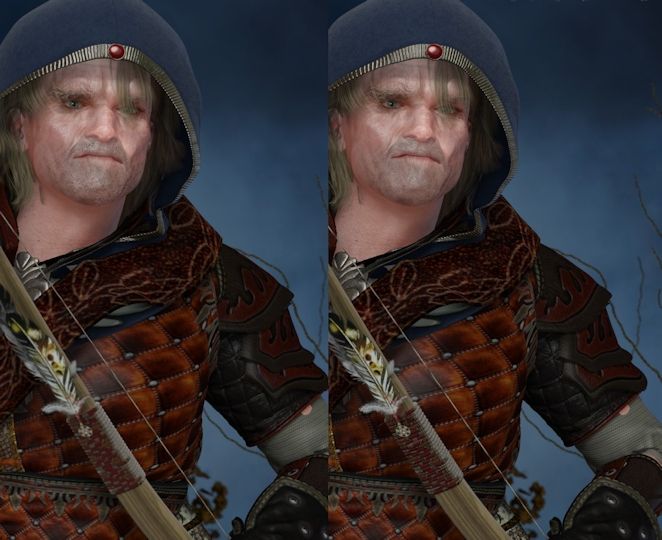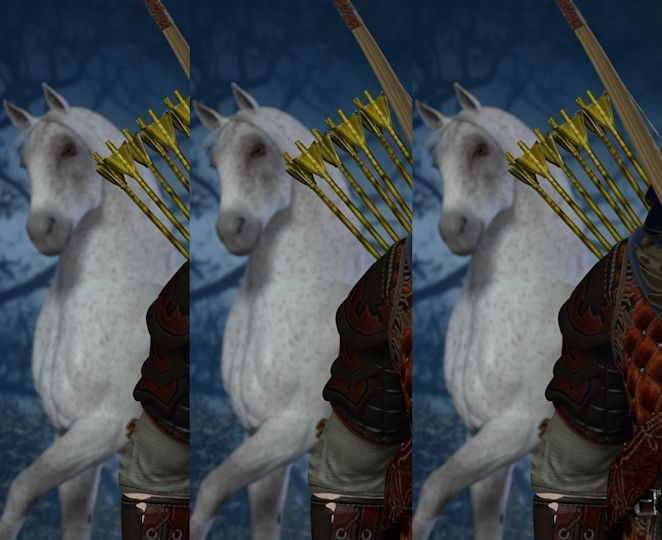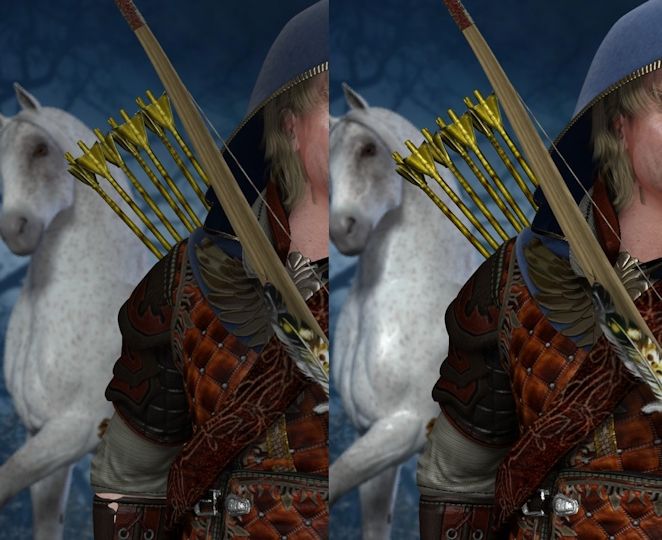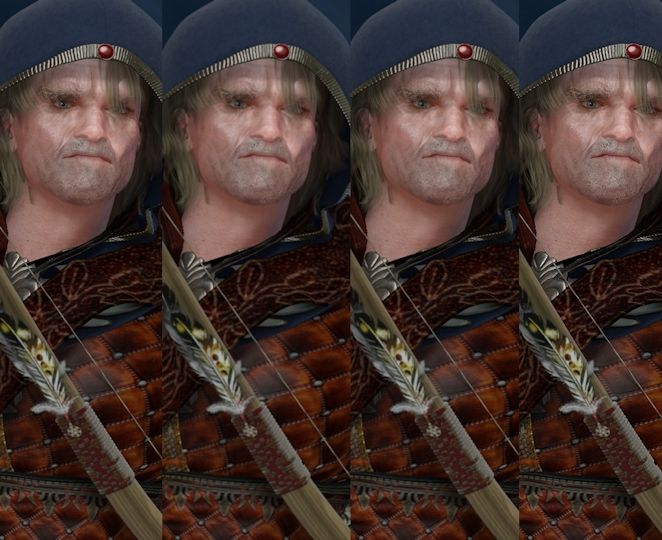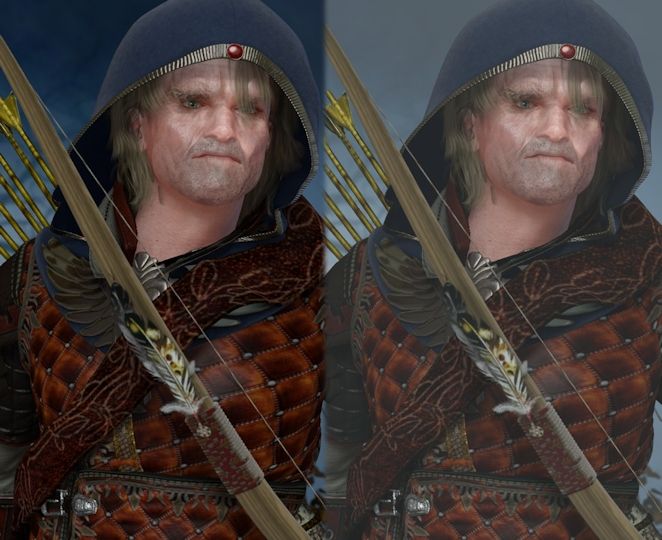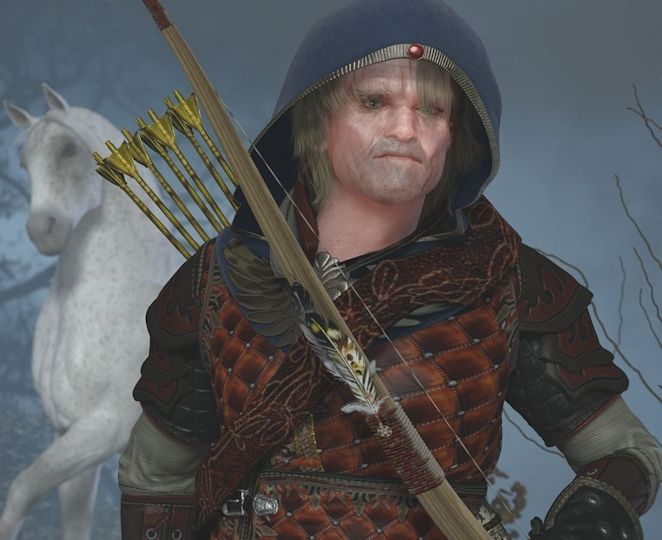This was the result, taking 30 minutes (click for full size and drag to see details):
Indirect Lighting
Next I bumped up the IDL quality to 100, which took 50 minutes. As you can see, compared to the original (left), the difference it made to the new render (right) is virtually nonexistent.
Irradiance Caching
I then reset my render settings and this time bumped up the Irradiance Caching to 100, which took a whopping 3 hours and 44 minutes. Once again, there's really no discernible difference, and certainly not enough to warrant such a massive increase in render time.
Minimum Shading Rate
This is where the differences really do show. Lowering the min shading from .9 to .2 has a very clear effect. The beard stubble and other shadows are smoother. Objects are sharper (compare, for example, the feather and grip on the bow) and textures like the quilted leather have a lot more depth and "pop" with more of a 3D feel. Definitely a better setting at 38 minutes.
Pixel Samples
Reset again and bump the pixel samples up to 7 and then once more to 12. 3-4 pixel samples is fine for the average render, but when using depth of field, it makes a significant difference to background objects. With the default settings, the horse has a fuzzy, jagged border. At 7 pixels, this is smoothed out to give a nicer effect and the blurring is even better at 12 pixels.
It's important to note, however, that this is one of the two settings that most heavily affects render time. Set to 7 pixels, the render took about 40 minutes. At 12 pixels, it was 46 minutes. And at 36 pixels it ran for 3 hours and only got about halfway through the image before I stopped it, but the difference between 36 and 12 for the depth of field here was just not noticeable enough to be worth it.
Gamma Correction
I've seen suggested settings for this range from 1.6 to 2.26. To test the extreme, I lowered it to 1 (render time 19 minutes) and the difference is obvious: deeper shadows, streaks of light, sharper contrast and more vivid colors. At first, I liked this, especially compared to the somewhat dull, washed out higher correction levels. But then I accepted that it gives certain objects more of a plastic feel and the contrast is too extreme. So I tried a compromise at 1.3 (23 minutes) but it still lost a bit of realism and also had some artifacting in the night sky background. Certainly better, and at first I was going to stick with that, but ultimately felt that the uneven illumination would stand out too much and settled on 1.5. Below is my "test default" setting of 1.6 compared to a setting of 1.
Gamma Correction
I've seen suggested settings for this range from 1.6 to 2.26. To test the extreme, I lowered it to 1 (render time 19 minutes) and the difference is obvious: deeper shadows, streaks of light, sharper contrast and more vivid colors. However, it gives certain objects more of a plastic feel and the contrast is too extreme. So I tried a compromise at 1.3 (23 minutes) but it still lost a bit of realism and also had some artifacting in the night sky background. I ultimately settled on 1.5. Below is my "test default" setting of 1.6 compared to a setting of 1.
Post Filtering
Many people (including myself until recently) seem to completely overlook the post filter options and simply default to Box 1. I've read heated discussions on why one is so much better than the others but ultimately, it comes down to the look you're going for and nothing more.
Below is my default render (using Box 1) as compared to Box 2, Gaussian 2 and Sinc 3. The differences are especially clear when you look at the eyes and the bow grip. Box 2 is the blurriest, Gaussian 2 is a bit softer than Box 1, and Sinc 3 is the sharpest. Render times were all just under 30 minutes.
Volumetric Lighting
This is a whole other discussion for another day, but it's worth noting that I redid the IDL and IC tests at 100 after setting up volumetric lighting and still noticed no difference. I had thought perhaps adding an atmosphere would make the higher levels more noticeable but the results were the same. This is the original render compared to the same default settings with atmosphere enabled (40 minutes).
Conclusion
After running tests to see how all of the individual settings affected otherwise identical renders, it was time to put it all together. Since IDL and Irradiance Caching had no real impact on the quality and increased the render time exponentially, I left them at the lower settings. 2 raytrace bounces are sufficient since there are no reflections or transparent objects. I chose to stick with 12 pixel samples for the smoother look, although 7 would probably suffice, especially for larger, more complex scenes. Personally, I prefer the sharpness and depth offered by a lower minimum shading and the post filter Sinc 3, so I've decided to stick with those, and I'm happy with my previously chosen gamma correction.
My final render settings, which I now use for all finished drafts, look like this:
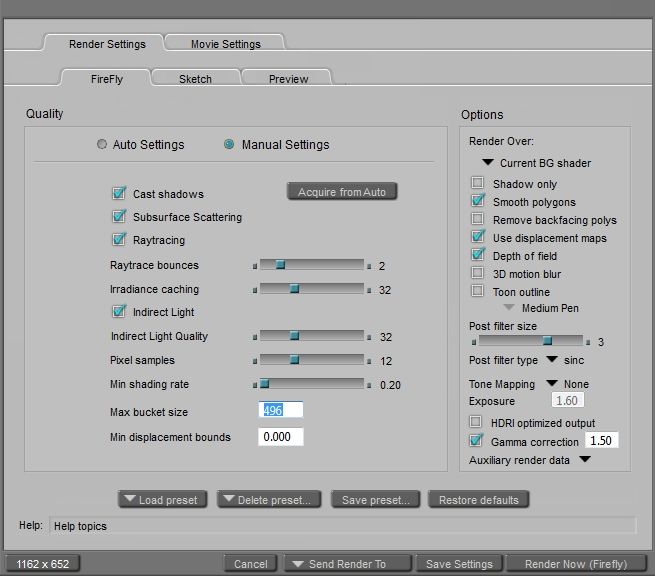
And here is the end result, coming in at 1 hour and 40 minutes:
I hope that this will be helpful to others who may be struggling to understand the purpose of the different Firefly render options.

